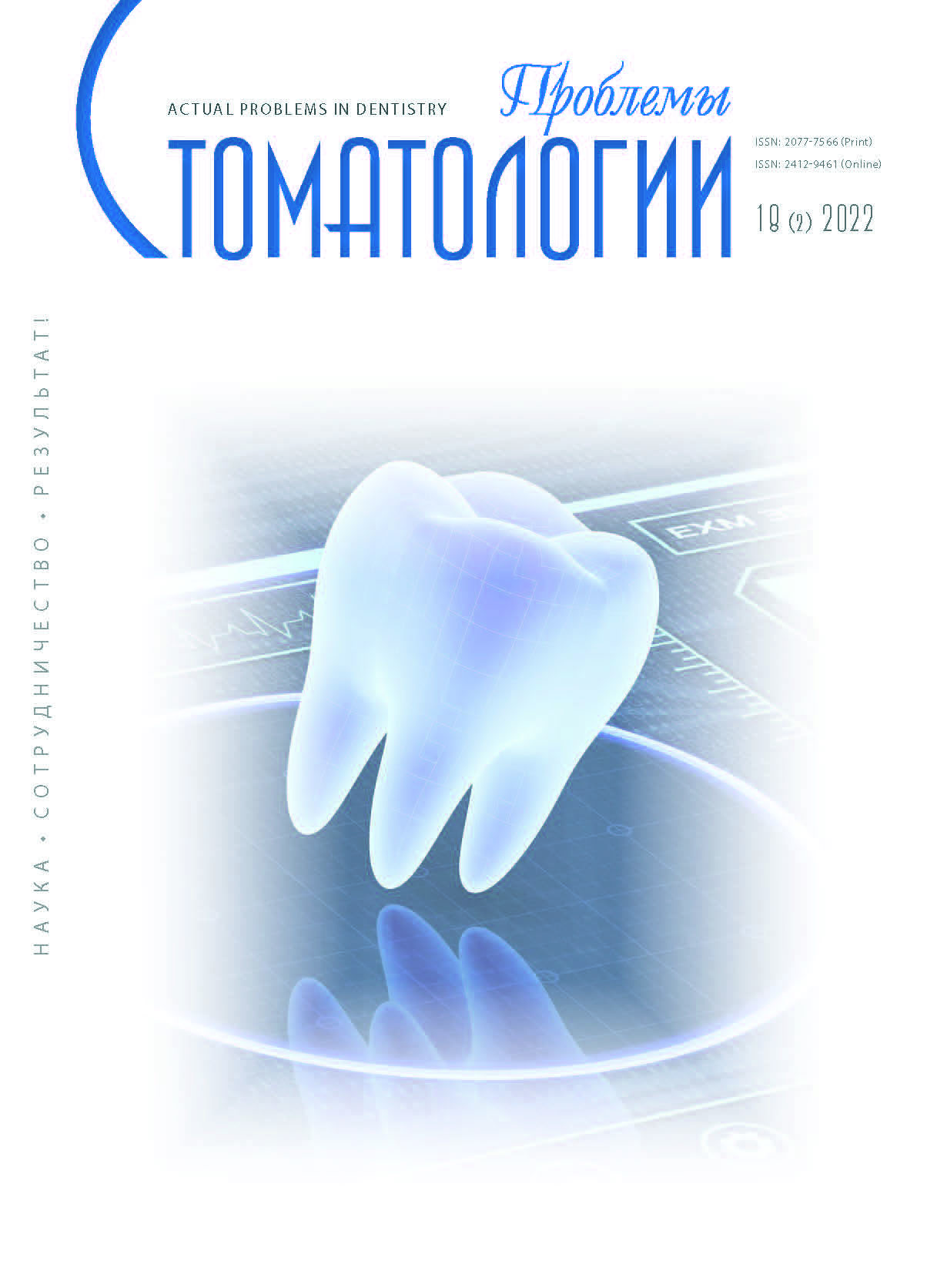Moscow, Russian Federation
Moscow, Moscow, Russian Federation
Medical Institute of Peoples' Friendship University of Russia (The Department of Orthopedic Dentistry, Head of the Department)
Moscow, Moscow, Russian Federation
UDC 616.31-07
CSCSTI 76.29
Russian Library and Bibliographic Classification 566
BISAC MED016070 Dentistry / Prosthodontics
BISAC MED018000 Diagnosis
Flautists are at risk of developing muscular and joint pain. While playing the flute muscles of the maxillofacial region do not work physiologically. In addition, the musicians stay in an asymmetrical posture for a long time and often experience stress during performance. All these factors can affect masseter and temporal muscles and consequently lead to temporomandibular joint dysfunction (TMD). The aim of research was to investigate the state of the temporal and masseter muscles of flautists by means of electromyography in comparison to the control group. Electromyography of the temporal and masseter muscles was performed in 30 flautists and 30 control subjects aged 18 to 35 with the BioEMG from the BioPAK complex (BioResearch, USA). Electromyography at rest registered increased bioelectric potential of the temporal and/or masseter muscles in a subgroup of flautists who play more than 3 hours a day in 37.5% of cases. In a clench test both musicians and control subjects showed asymmetrical work of masticatory and temporal muscles, while in the control group, symmetry below 50% was noted only in the work of the temporal muscles. Synergy between temporal and masseter muscles less then 50% was 1.3 times more common in the control group than among flute players though right-sided disorders were more common in flute players. Electromyography of masticatory muscles is an important stage in a comprehensive examination of the TMJ condition, however, this method cannot be used as the single one or decisive one to diagnose the professional pathology of flautists.
flautists, flute, TMD, occupational diseases, electromyography, temporal muscles, masseter muscles
1. Adeyemi TE, Otuyemi OD. Relationship between Playing of Wind Musical Instruments and Symptoms of Temporomandibular Joint Disorders in a Male Nigerian Adult Population. West Afr J Med. 2019;36(3):262-266.
2. Kerstein, DMD, Robert B. Handbook of Research on Computerized Occlusal Analysis Technology Applications in Dental Medicine (2 Volumes). IGI Global, 2015.
3. Kok LM, Huisstede BM, Voorn VM, Schoones JW, Nelissen RG. The occurrence of musculoskeletal complaints among professional musicians: a systematic review. Int Arch Occup Environ Health. 2016;89(3):373-396. doihttps://doi.org/10.1007/s00420-015-1090-6
4. Nusseck M, Spahn C. Comparison of Postural Stability and Balance Between Musicians and Non-musicians. Front Psychol. 2020;11:1253. doihttps://doi.org/10.3389/fpsyg.2020.01253
5. Nyman T, Wiktorin C, Mulder M, Johansson YL. Work postures and neck-shoulder pain among orchestra musicians. // Am J Ind Med. 2007 May;50(5):370-6.
6. Stanhope J. and Milanese S. / The prevalence and incidence of musculoskeletal symptoms experienced by flautists // Occup Med (Lond). 2016 Mar;66(2):156-63. doi:https://doi.org/10.1093/occmed/kqv162.
7. Van Selms MKA, Ahlberg J, Lobbezoo F, Visscher CM. Evidence-based review on temporomandibular disorders among musicians. Occup Med (Lond). 2017;67(5):336-343. doihttps://doi.org/10.1093/occmed/kqx042
8. Dubova L.V., Melnik A.S., Stupnikov A.A., Saveliev V.V. The results of studying the bioelectric potentials of masticatory muscles and movements of the lower jaw in patients using a functional diagnostic complex. dental forum. - 2016. - No. 4. - S. 27-28. (In Russ.)
9. Lebedenko I.Yu., Grinin V.M., Abdullaev A.A. Comparative analysis with temporomandibular joint pain dysfunction syndrome in rheumatoid arthritis. Dentistry. - 2003 - 128 p. (In Russ.)
10. Melnik, A. S. The use of a hardware functional diagnostic complex in patients with TMJ muscular-articular dysfunction / Digital Dentistry. - 2020. - T. 12. - No. 1. - S. 35-38. (In Russ.)



















